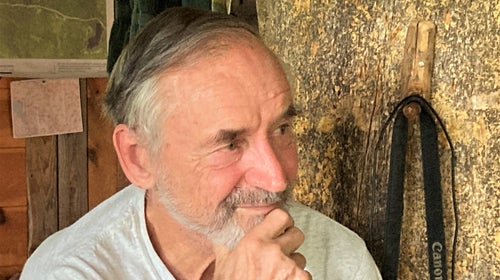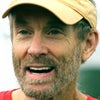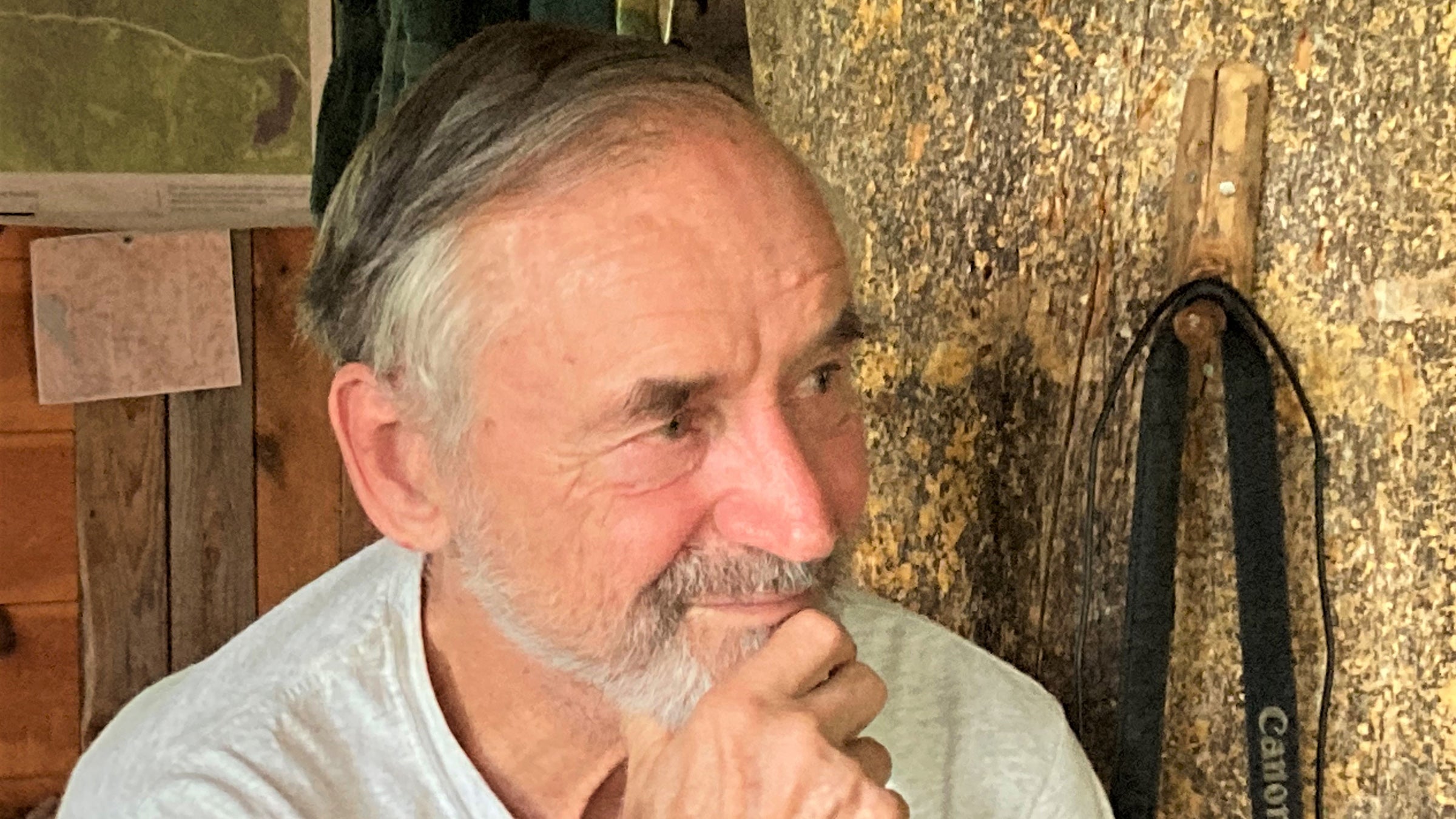We have only a half-mile remaining on an easy 4-mile run when Bernd Heinrich turns to me and says, “This is where I usually pick it up.”
Huh? I’m not expecting this. I had seen Heinrich limp through a recent PBS News Hour video. While he’s running smoother today, he’s 81, and doesn’t appear to have much “pick it up” in his legs.
That’s one reason we had agreed to accompany him — “we” being two Boston Marathon champs, one 2:10 marathoner, and a guy who has completed more than 300 ultramarathon races. We’re anywhere from five to 15 years younger than Heinrich, and figure it can’t be hard to hang with the old guy.
“Sure, go for it,” I say. I’m expecting he’ll shuffle ahead in that awkward, stiff-legged way geezers attempt to launch themselves forward.
But no, Heinrich bolts in front of me. He’s instantly gone. His first running book was titled Racing The Antelope (later changed to Why We Run), and that’s how he looks now with his arms hammering hard, and his legs bounding off the asphalt.
I give chase with my stiff-legged, geezer shuffle, but to no avail. Heinrich keeps pulling away, and finishes about 20 seconds ahead of me. I won’t embarrass the other three by telling where they are.
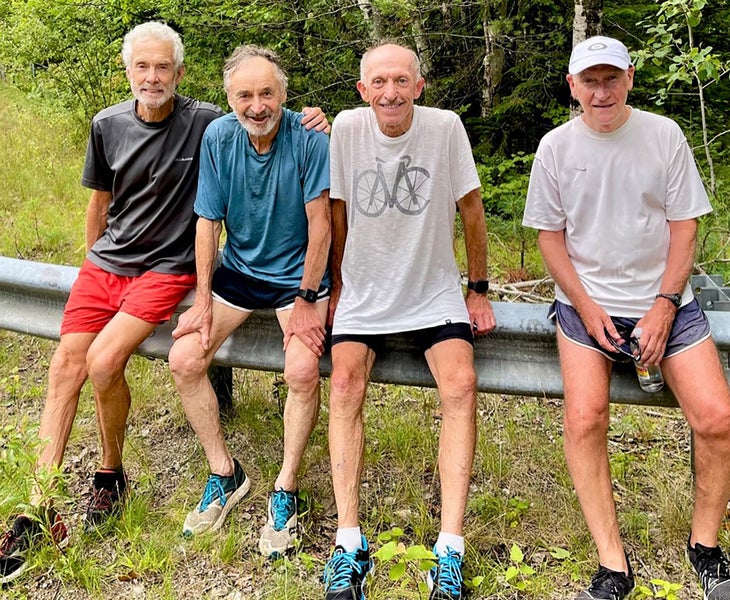
Birds, Bees, and Beings
We shouldn’t have been surprised by his raw power. The previous afternoon, he had led us on a modest hike from his off-the-grid cabin in Weld, Maine. We reached a tall evergreen. “If you climb the tree, you can see Mount Blue in the distance,” Heinrich said, beckoning to the sky.
We four — we stiff-limbed four — assessed the high branches … and didn’t make a move. Heinrich sprang upward, grabbed a limb, pulled himself quickly to the first branch, and then repeated the same movements several times in rapid succession. He looked down, practically imploring us to join him.
But we didn’t budge. To some of us, homo sapiens is a land-dwelling animal. For Heinrich, birds, bees, and beings (human) are more closely related.
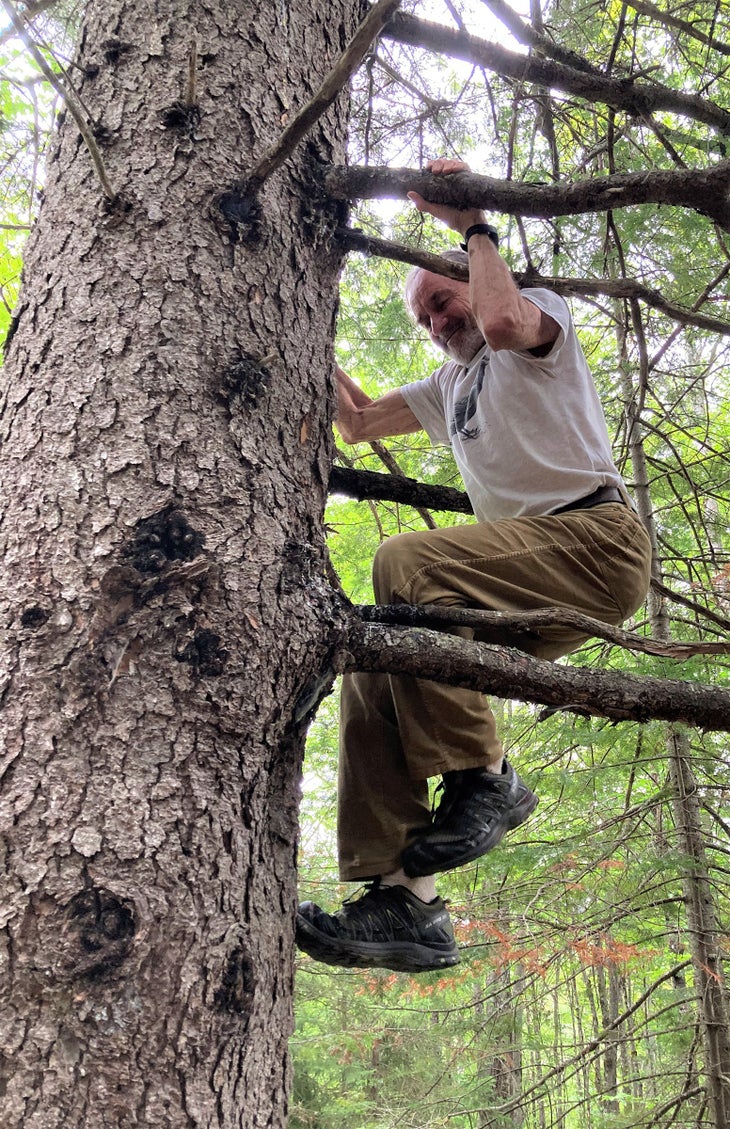
Heinrich has always been a runner — by nurture and by Nature both. He recalls how, in childhood, his family lived in the woods of north Germany, barely meeting their daily calorie needs from small animals, plants, and berries. He instinctively raced everything that moved in the dense forest, especially the insects he came to love. He didn’t feel deprived by this spare existence, but enriched. “Who needs toys after you’ve seen caterpillars up close, and watched them turn into moths,” he once told “Ultra Running History.”
Finding He Can Fly
Later, attending U.S. schools, he had no sports skills of any kind, but then learned about something called cross-country running. That, he could do. At graduate school in Berkeley, CA, he fell in with some veteran runners who encouraged him to try the marathon distance. So did penpal and famed Harvard sociobiologist E.O. Wilson, a running fan who calculated that Heinrich could possibly break 2:30 for 26.2 miles.
Wilson also admired Heinrich’s field work. “He’s the only biologist I ever knew who got his data and checked it by running with the bumblebees as they flew back and forth between their home and wherever they were going.”
In 1975, Heinrich ran 2:23:49 at Boston, and in 1979 he won the Golden Gate Marathon in 2:29:16. The next spring, he returned to Boston and won the masters division in 2:25:25, although he had to produce evidence that he had turned 40 the day before. He was born on an April 19 — the traditional Patriots’ Day date until the race moved to Mondays in 1969.
Eighteen months later, Heinrich entered a big 100K ultramarathon in Chicago. He emerged the winner, setting an American record and World masters record with his 6:38:20 for 62.2 miles — a 6:24/mile pace. He achieved this without any coaching or research into how other ultra runners trained. He just deduced that he should log a lot of 20 milers in training. In his peak training, he ran six 20s per week, mostly with strong finishes.
He continued running impressive ultramarathons for several years, setting a number of records, and then retired from serious racing for two decades. In 2001, at 61, he raced 50 miles on the track in Maine in 6:39:55 — roughly 8:00 minutes/mile. It was, you guessed it, an American age-group record.
Two years ago, approaching age 80, Heinrich began scheming to attack more age-group ultra records. This plan went off the tracks when he injured himself chasing a deer through the woods — not your typical overuse injury — and when Covid derailed pretty much everything. His last two serious races were September 10Ks in Portland, ME, where he clocked a 48:54 in 2018 and a 50:16 in 2019 (equivalent to a 31:36 “open” class performance).
Running Naturalist
When not running, Heinrich has enjoyed a long, distinguished career as a naturalist-zoologist-teacher-

Heinrich’s books are widely praised by both amateur and professional naturalists. They include titles like Bumblebee Economics, Mind of the Raven, and Winter World. In reviewing Mind of the Raven, the New York Times observed of Heinrich: “He has a rare ability to embed dense scientific explications within graceful, light-footed nature writing.”
The same holds true of his writing about running. In my library, Why We Run sits on the top shelf, which is reserved for only the best of the best running books. No one has done a better job of interweaving a dramatic race narrative — his preparation and execution of that Chicago 100K in 1981 — with the other stuff of life: childhood, curiosity, learning, and discovery. Not to mention, many fascinating insights into animal physiology.
Mind of the Runner
Indeed, Why We Run helped me understand the brain’s primal role in distance running. Heinrich notes that most small-brained predators employ a “pounce and kill” approach. If this fails to net a meal, they retire to the shade. They sprint, then they stop, because they can’t imagine how a longer, stealthier, more creative hunt might lead to lunch.
Humans can. Sure, we have sweat glands to help us deal with the heat. But it takes a brain to form a plan and stick with it — to dream and imagine success. “It’s vision,” Heinrich writes simply. “To endure is to have a clear goal and the ability to extrapolate to it with the mind — the ability to keep in mind what is not before the eye. Vision allows us to reach into the future, whether it’s to kill an antelope, or to achieve a record time in a race.”
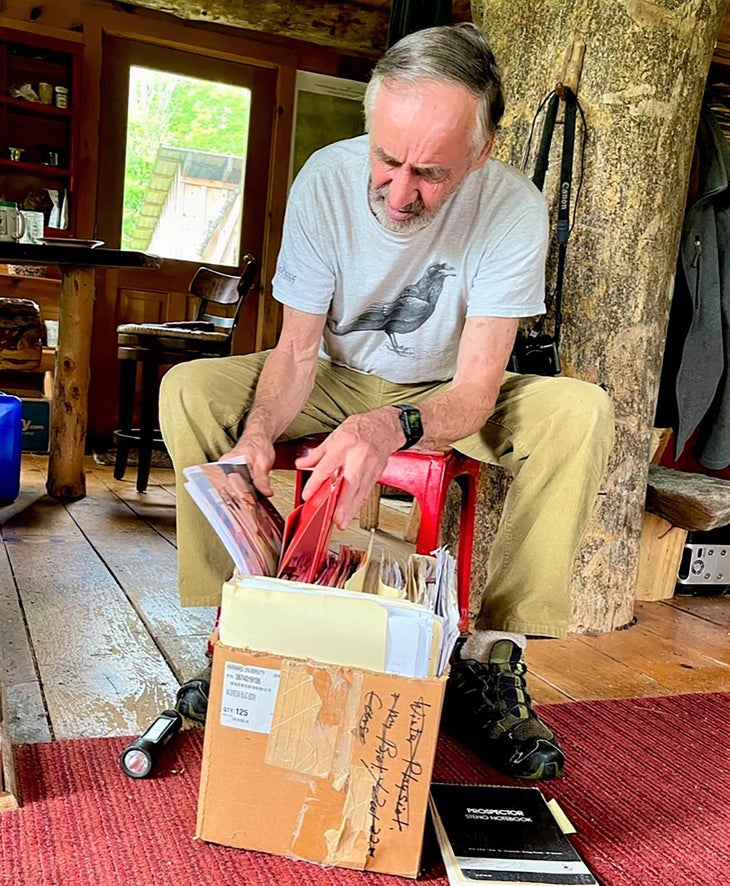
In his latest book, Racing The Clock, released in July, Heinrich muses about the concerns of all aging runners: slowing down and getting closer to the final finish line. The words “circannual” and “senescence” pop up frequently. He no longer measures things in minutes, hours, and days, but in annual rhythms that lead inevitably to decay. What lies ahead? What might he choose to change, and where should he hold steady?
There’s a touch of regret, and an increase in resolve to make good. “My new race in the last passage of my life is to learn to love more deeply,” he writes. This sentiment, nearly universal among his peers, is a new one from Heinrich.
He would like to leave a lasting mark. It can’t be his running records, as they have mostly disappeared already. The planet, with proper stewardship, might last longer, and he has lived more closely than most to its beauty and abundance. (He’s currently keeping track of 1,348 American Chestnut saplings on his property. They are virtually extinct elsewhere. By his calculations, a mature tree produces more energy than his solar panels.)
Heinrich wonders if we Earth denizens might knit ourselves together through Nature. “As social beings, we frame our worthiness in terms of becoming part of something we deem to be of value greater than ourselves, such as a sports team, a clan, a country,” he writes. “Why not of Nature, to which we all belong?” One has to hope.
Of course, he doesn’t have all the answers. That’s okay. It’s a fact of life for any scientist. At some point, he can only make personal decisions. The long race of life has been mostly run, with results satisfactory enough, and so there seems little reason to change course.
“There are still many unknowns along the road before the finish line,” Heinrich observes “But what will serve me well from the past is my perseverance and discipline, and applying them to whatever may come.”
